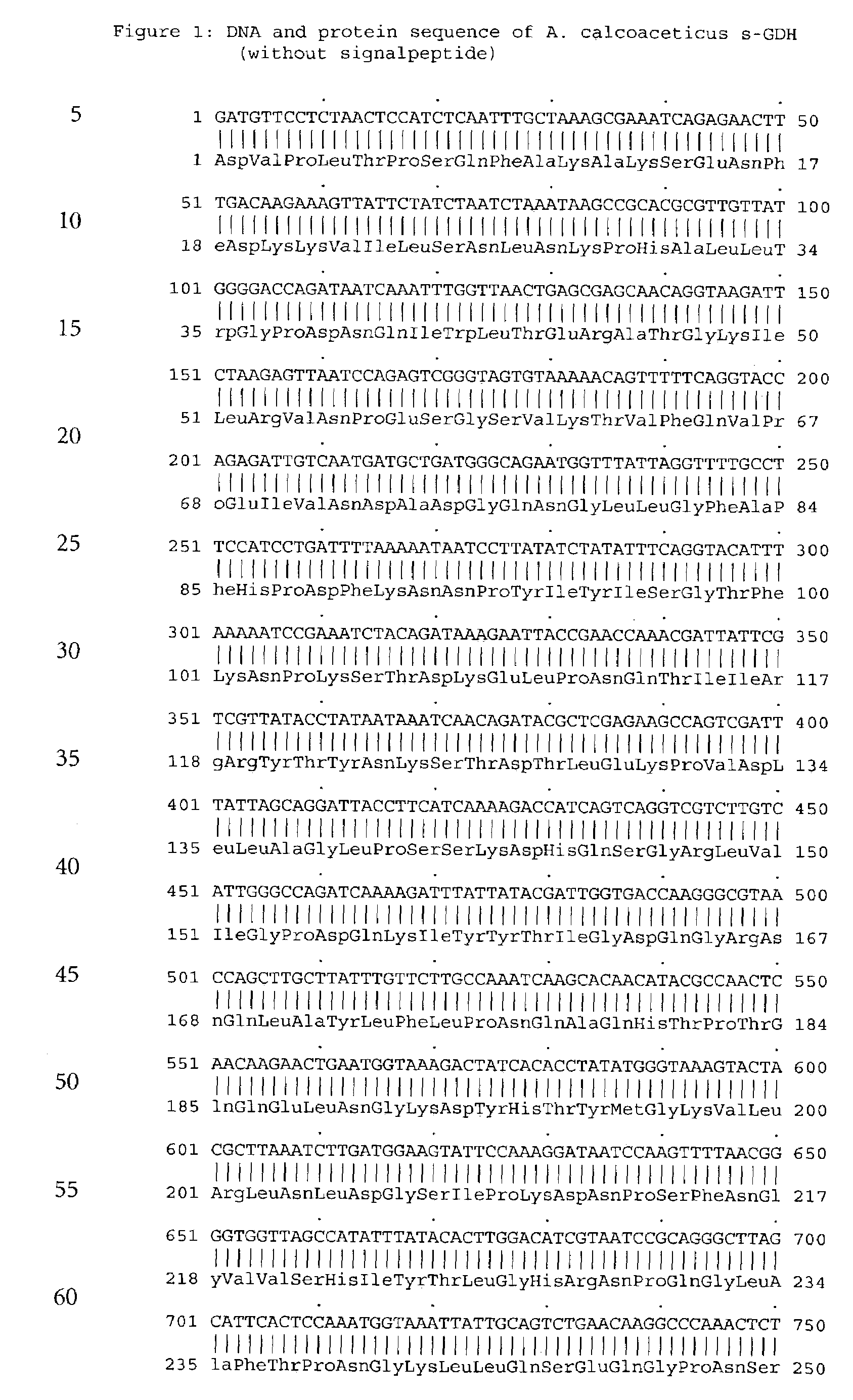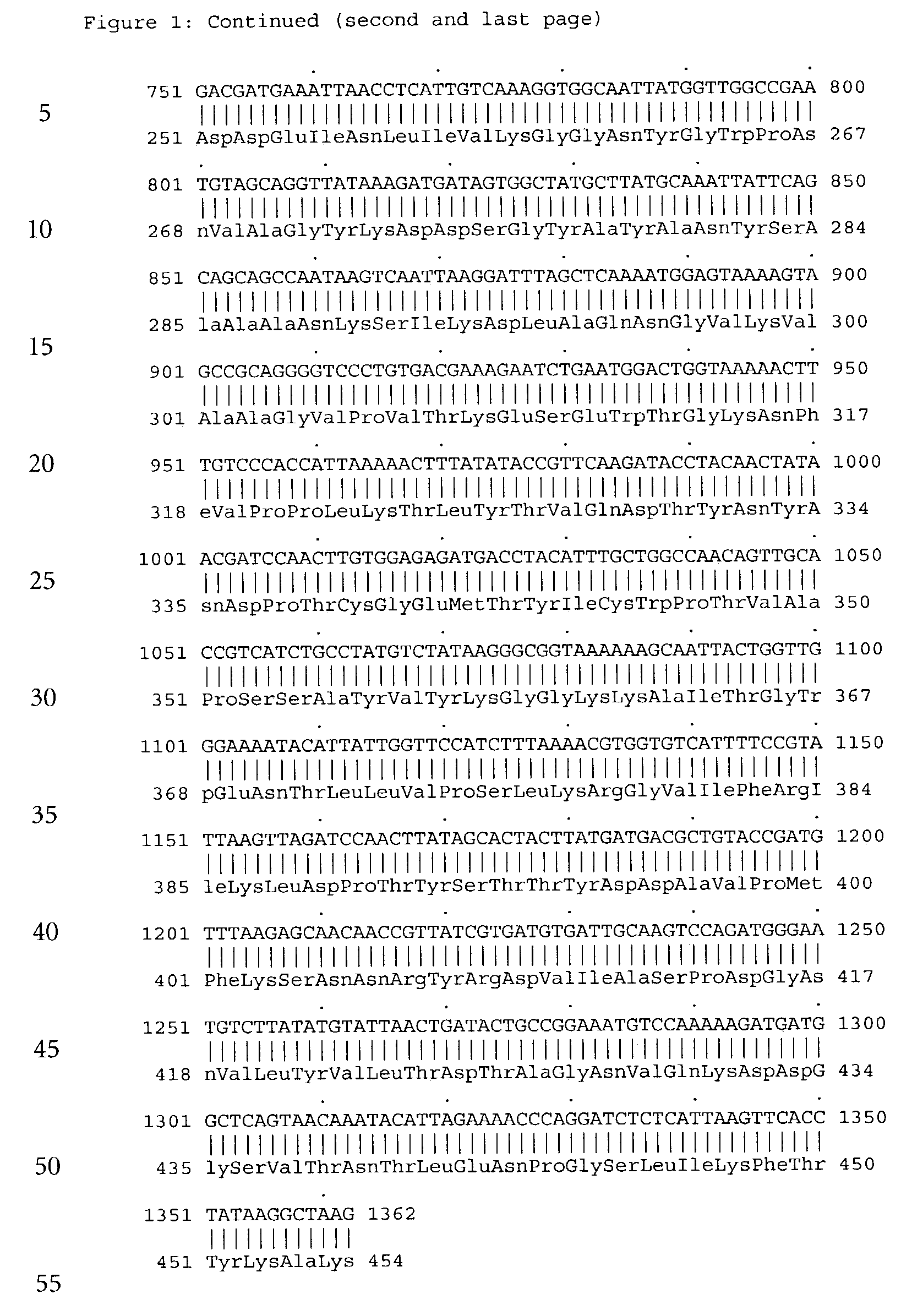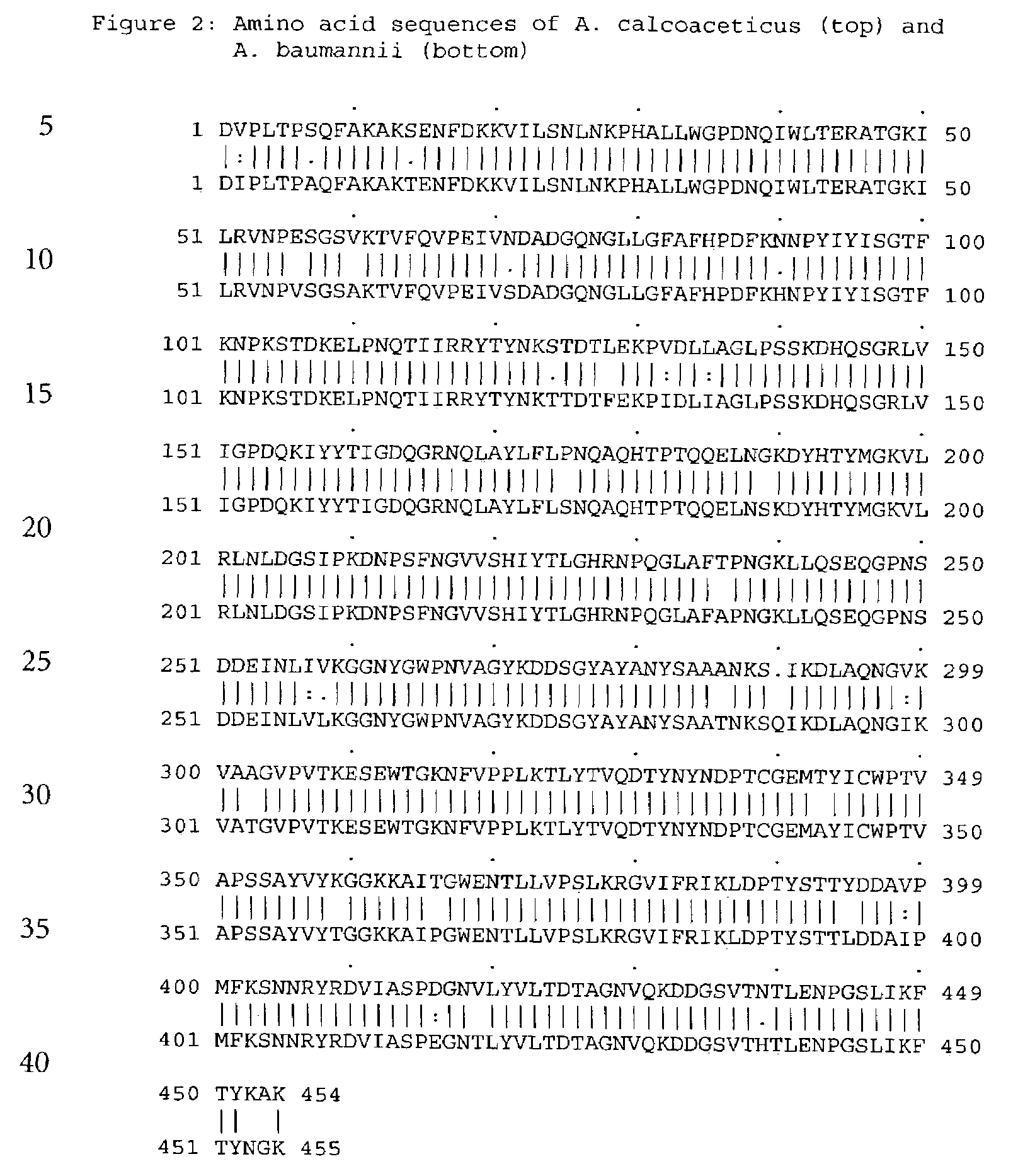Forms of soluble pyrroloquinoline quinone-dependent glucose dehydrogenase
a technology of pyrroloquinoline and glucose, which is applied in the field of soluble pyrroloquinoline quinone-dependent glucose dehydrogenase, can solve the problems of poor electron acceptor of s-gdh, poor glucose measurement accuracy, and insufficient electron donation to oxygen, so as to improve the effect of improving the specificity of the substrate for glucos
- Summary
- Abstract
- Description
- Claims
- Application Information
AI Technical Summary
Benefits of technology
Problems solved by technology
Method used
Image
Examples
example 1
Cloning and Expression of the Wild-type A. calcoaceticus Soluble PQQ Dependent Glucose Dehydrogenase in E. coli
[0114]The s-GDH gene was isolated from Acinetobacter calcoaceticus strain LMD 79.41 according to standard procedures. The wild-type s-GDH gene was subcloned into a plasmid containing the mgl promoter for adjustable expression (cf. Patent application WO 88 / 09373). The new construct was called pACSGDH (see FIGS. 3 and 4). The recombinant plasmids was introduced into a host organism selected from the E.coli group. These organisms were then cultivated under appropriate conditions and colonies showing s-GDH activity selected.
[0115]The plasmid pACSGDH was isolated from a 200 ml over-night culture of the clone mentioned above using the QIAGEN Plasmid Maxi Kit (Qiagen) according to the manufacturers protocol. The plasmid was resuspended in 1 ml bidest. water. The concentration of the plasmid was determined using a Beckman DU 7400 Photometer. The yield was 600 μg. Then the quality ...
example 2
Mutagenic PCR
[0116]To generate random mutations in the s-GDH-gene, mutagenic PCR (polymerase chain reaction) was performed. The pACSGDH plasmid and the DNA sequence encoding the mutated enzymes (PCR product from mutagenic PCR) were digested with the restriction enzymes Sph I and Eco RI. The products were gel purified. The digested DNA sequences were ligated and an aliquot of the ligation reaction mixture was used to transform competent E.coli cells. The transformants were subsequently selected on LB plates containing ampicillin.
[0117]To assay, individual colonies were chosen, grown over night in LB medium containing ampicillin and subjected to screening (see Example 3).
[0118]Mutagenic PCR reaction mixture:
[0119]40 ng pACSGDH
[0120]1× buffer without MgCl2 (Roche Diagnostics GmbH, Cat. 1699 105)
[0121]dCTP, dTTP 1 mM
[0122]dATP, dGTP 0.2 mM (Roche Diagnostics GmbH, Cat. 1969 064)
[0123]40 pmol GF23-Primer (5′-CGC GCA CGC GCA TGC CGC CGA TGT TC) (=SEQ ID NO: 4)
[0124]40 pmol GR23 (5′-GAC GG...
example 3
Screening
[0140]The mutant colonies on agar plates described above where picked in microtiter plates (mtp) containing 200 μl LB-Ampicillin-media / well and incubated over night at 37° C. These plates are called master plates.
[0141]From each master plate, 5 μl sample / well was transferred to a mtp containing 5 μl per / well of B (B=Bacterial Protein Extraction Reagent; Pierce No. 78248) for cell disruption and 240 μl of 0.0556 mM pyrollo-quinoline quinone(PQQ); 50 mM Hepes; 15 mM CaCl2 pH 7.0 / well for activation of s-GDH were added. To complete the formation of the holoenzyme, the mtp was incubated at 25° C. for 2 hours and at 10° C. over night. This plate is called working plate.
[0142]From the working plate 2×10 μl sample / hole were transferred to two empty mtps. After that, one was tested with glucose and the other with maltose or other selected sugar molecules as a substrate. All sugar molecules were used in equimolar concentrations.
[0143]The dE / min was calculated and the value using glu...
PUM
| Property | Measurement | Unit |
|---|---|---|
| volume | aaaaa | aaaaa |
| volume | aaaaa | aaaaa |
| pH | aaaaa | aaaaa |
Abstract
Description
Claims
Application Information
 Login to View More
Login to View More - R&D
- Intellectual Property
- Life Sciences
- Materials
- Tech Scout
- Unparalleled Data Quality
- Higher Quality Content
- 60% Fewer Hallucinations
Browse by: Latest US Patents, China's latest patents, Technical Efficacy Thesaurus, Application Domain, Technology Topic, Popular Technical Reports.
© 2025 PatSnap. All rights reserved.Legal|Privacy policy|Modern Slavery Act Transparency Statement|Sitemap|About US| Contact US: help@patsnap.com



